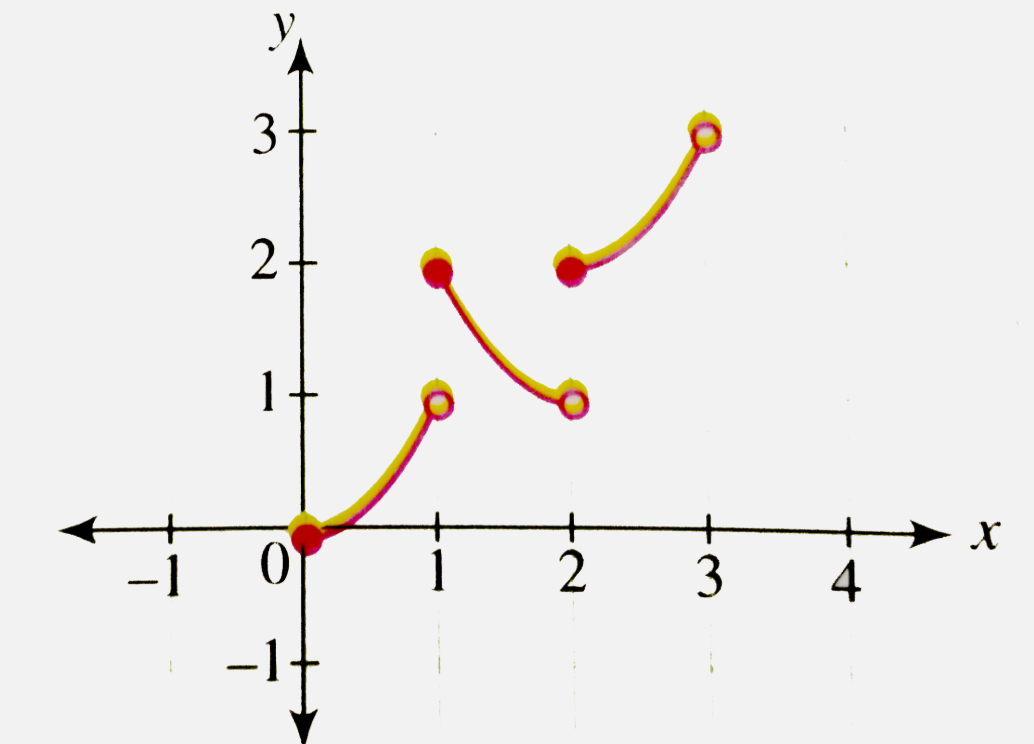If f:R→R,g:R→R are given by f(x)=(x+1)2 and g(x)=x2+1, then write the value of fog(−3).Solution in Tamil
Vertical asymptotes are x=−2,x=0andx=3.
Horizontal asymptote is y = 2.
Topper's Solved these Questions
- GETTING STARTED WITH GRAPHSBOOK - CENGAGECHAPTER - GETTING STARTED WITH GRAPHSEXERCISE - Exercise
18 Videos
- FUNCTIONSBOOK - CENGAGECHAPTER - FUNCTIONSEXERCISE - Question Bank
21 Videos
- GRAPH OF INVERSE TRIGONOMETRIC FUNCTIONSBOOK - CENGAGECHAPTER - GRAPH OF INVERSE TRIGONOMETRIC FUNCTIONSEXERCISE - Exercise
18 Videos
Similar Questions
Does the following graph pass the vertical or horizontal line test ?

View SolutionIf there are four distinct real numbers satisfying thẻ equation ∣∣x2−4x−7∣∣=n, then number of integers in the range of n is
View SolutionDraw the graph of y=tan−1x+cot−1x
View SolutionLet f:R→R and g:R→R be defined by f(x)=x2 and g(x)=x+1. Show that fog≠gof.
View SolutionIf f:R rarr R and g:R rarr R given by f(x)=x-5 and g(x)=x^(2)-1, Find fog
View SolutionThe composite mapping fog of the maps f:R→R,f(x)=sinxandg:R→R,g(x)=x2, is
View SolutionIF f:R→R,g:R→R are defined by f(x)=3x−1 and g(x)=x2+1 , then find (fog)(2)
View SolutionIf f:R→R,g:R→R are defined by f(x)=3x−1 and g(x)=x2+1 then find (fog)(2).
View SolutionIf f:R→R,g:R→R are defined by f(x)=3x−1,g(x)=x2+1 then find
(i) (fog)(2)
View SolutionIf f:R→R,g:R→R are defined by f(x)=x2+2x−3,g(x)=3x−4, then (fog)(−1)=
View Solutionयदि फलन f:R→R,f(x)=x2+2 और g:R→R,g(x)=xx−1 द्वारा परिभाषित हो , तो fog और gof ज्ञात कीजिए ।
View Solutionf:R→R , और g:R→R इस प्रकार परिभाषित हैं : f(x)=1+x2 और g(x)=log x , तो (fog ) (x) और (fog) (x) ज्ञात कीजिए।
View SolutionIf f:R→R,g:R→R, given by f(x)=[x],g(x)=[x], then find fog (−23) and gof (−23).
View Solutionमाना f:R→R तथा g:R→R,f(x)=x2−1 तथा g(x)=2x+3 द्वारा परिभाषित है। fog तथा gof ज्ञात कीजिए।
View SolutionThe composite mapping fog of the maps f:R→R,f(x)=sinxandg:R→R,g(x)=x2, is
View Solution
